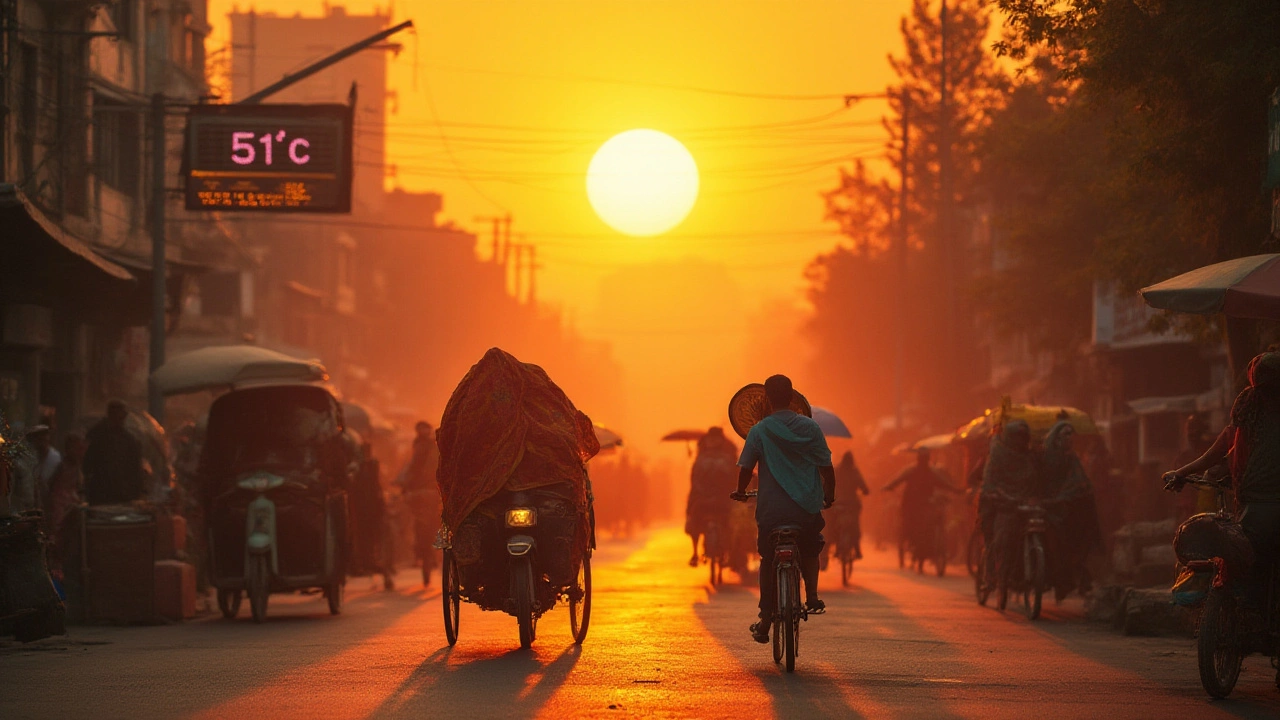Heatwaves in India: What’s Happening and How to Beat the Burn
India’s summer has always been hot, but the recent heatwaves are off the charts. Temperatures soaring above 45°C are becoming regular, and they’re not just uncomfortable – they’re dangerous. If you’ve felt the sun beating down like a furnace, you’re not alone. Understanding why these extremes are happening and what you can do right now makes the difference between suffering and staying safe.
Why Heatwaves Are Getting Worse
First, the climate is changing. Rising greenhouse gases trap more heat, turning ordinary hot days into record‑breaking blasts. Urban areas add to the problem; concrete, asphalt, and lack of trees create “heat islands” that push local temperatures higher than surrounding countryside. Deforestation and water scarcity also cut down natural cooling, making the land retain more heat.
Second, weather patterns are shifting. The monsoon’s timing and strength are becoming unpredictable, so some regions experience longer dry spells before the rains finally arrive. Those dry periods let the soil dry out, which reduces the ground’s ability to absorb heat, sending more of it back into the air.
How Heatwaves Affect Daily Life
Health risks top the list. Heatstroke, dehydration, and worsening of heart or lung conditions spike during intense heat. Even simple activities like walking to work or playing with kids can become risky if you’re not prepared. Agriculture feels the strain too – crops wilt, livestock suffer, and farmers see lower yields, which can drive up food prices.
Energy demand also jumps. Air‑conditioners run nonstop, leading to higher electricity bills and, in some places, blackouts when the grid can’t keep up. That, in turn, forces more people to rely on fans or open windows, which don’t offer enough relief during extreme heat.
Practical Ways to Stay Cool and Safe
Start with water. Drink small amounts frequently, even if you don’t feel thirsty. Keep a bottle handy and aim for at least two liters a day. If you’re outdoors, carry electrolyte tablets or a pinch of salt to replace lost minerals.
Dress smart. Light‑colored, loose‑fitting cotton clothes let sweat evaporate and keep your skin cooler. A wide‑brimmed hat and sunglasses protect your head and eyes from direct sun.
Seek shade whenever possible. If you have to be outside, take breaks in the shade or a cool indoor spot every 20‑30 minutes. Cool your pulse points – the wrists, neck, and temples – with a wet cloth or splash of water.Plan your day around the heat. Aim to do chores, exercise, or travel early in the morning or late in the evening when temperatures dip. Use a timer on the stove and oven to avoid heating up the kitchen.
If you have an air‑conditioner, set it to a comfortable 24‑26°C and use a fan to circulate the cool air. When power cuts happen, open windows at night to let cooler air in, then close them early morning to trap the chill.
Watch for warning signs. Dizziness, rapid heartbeat, nausea, or confusion are red flags. If you or someone you’re with shows these symptoms, move to a cooler place, hydrate, and seek medical help if it doesn’t improve quickly.
Finally, look out for neighbors, especially the elderly or those with health issues. A quick call or a shared bottle of water can prevent a serious heat‑related incident.
Heatwaves won’t disappear overnight, but with these simple steps you can protect yourself and stay comfortable. Keep this guide handy, stay aware of local heat alerts, and remember that staying cool is a collective effort – the more we act, the safer the whole community becomes.
